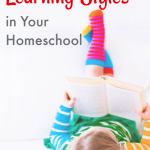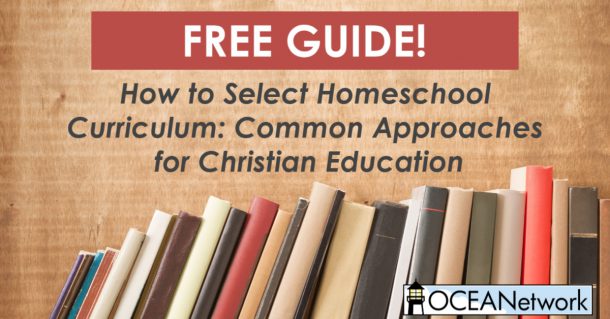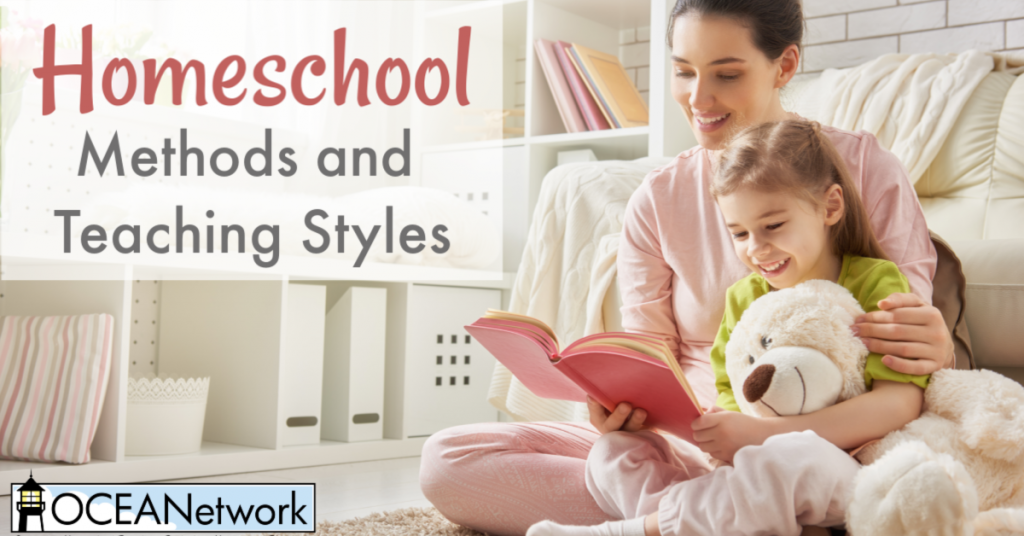We all learn differently. Understanding and capitalizing on your child’s learning style will make learning easier and more enjoyable for your homeschool children. Many studies have been done on how people learn and there are several ways of categorizing learning styles. Probably the easiest to understand divides learning styles into three modalities:
A. The visual learner – Learns best through visual images (diagrams, videos, watching others)
B. The auditory learner – Learns best through hearing (lecture, being read to, songs)
C. The kinesthetic learner – Learns by doing and touching, manipulating materials.

Teaching Tips for Learning Styles
Young children usually start out as kinesthetic learners, developing other strengths as they grow older. Many children develop tendencies toward a particular learning style over time. Recognizing those strengths and tendencies can be very useful when troubleshooting homeschool challenges or choosing curriculum.
Here are some things to consider for each main learning style including a list of teaching tips to try.
Visual Learners
The visual learner takes in and retains information best when it is presented visually: demonstrations, diagrams, maps, and so on. Reading is also a common visual learning tool. However, visual learners will also often prefer graphic representations or illustrations. Some consider reading more of an auditory learning tool. This may vary depending on the child and whether or not they internally voice the words as they read.
Ideas for Visual Learners:
- Taking notes
- Highlighting key concepts
- Use written instructions
- Sight words for spelling
- Watch videos
- Drawing
- Infographics
- Diagrams
- Building (legos, blocks, sticks, graphic design program, etc.)
- Comics
- Cartoons
- Flash Cards (especially those with graphics or illustrations)
- Puzzles
- Visual games
- Word games
- Books with illustrations
Auditory Learners
Auditory learners process information better when it is presented with sound rather than relying too heavily on visual cues. As mentioned earlier, some auditory learners do rather well with reading because they voice the text in their heads or even out loud as they read.
Ideas for Auditory Learners:
- Audiobooks
- Fact memorization songs
- Lectures / spoken presentations
- Discussion
- Oral narration
- Oral dictation for spelling
- Read-alouds
- Quiet space for work
- Noise blocking headphones
- Dictating reports
- Read instructions out loud
- Use video that uses good audio explanations
Kinesthetic Learners
This type of learner always needs to be moving and interacting with their learning experience. They learn best by doing (rather than hearing or seeing) and their academics will benefit from physical activity.
Again, young children really start from this learning style at the beginning and will grow in other styles as they mature. However, they may retain a tendency toward kinesthetic learning.
Ideas for Kinesthetic Learners:
- Frequent breaks with short physical activity (stretching, walks, laps, etc.)
- Work standing or sitting on a stability ball (or upside down on the couch)
- Practice math facts, spelling, etc, while bouncing on a trampoline
- Manipulatives for math
- Hands-on learning and projects
- Games
- Drawing
- Building
- Experiments
- Field Trips
- Puzzles
- Sandpaper letters and other tactile writing/spelling techniques
- Using hand motions or props aid in memorization
- Brainstorm visually on paper or white boards
As you begin teaching your children at home, observe them and see if their behaviors reveal a certain strength in one of these learning styles. You will begin to see that choosing curriculum that fits their learning style or incorporating activities to adjust that material to their style will help them process and retain the information better.
Also note that as they move into the later grades, they’ll need to learn to use methods that may not exactly draw on their preferred learning style. So stretching them in those areas as they go into middle school and higher is a good thing.
Identifying your child’s learning style can be a very helpful tool in your homeschooling efforts. We hope this guide and lists of teaching ideas will be useful to you this year!
Additional Resources:
- The Way They Learn, Cynthia Ulrich Tobias
- Every Child Can Succeed: Making the Most of Your Child’s Learning Style, Cynthia Ulrich Tobias
- Homeschooling Methods: Seasoned Advice on Learning Styles, Paul and Gena Suarez
- How to Get Your Child Off the Refrigerator and Onto Learning, Carol Barnier



Thanks for the refresher. My challenge is I take things as they come. It’s like I have parts of all 3 learning styles, although I understand they overlap with same word explanations. I often work best in a tunnel, focused on one thing yet my mind constantly wanders. Kind of like one of my favorite mentors, Isaac Newton. I end up listening and hear things others don’t. Hard to get others excited about these things I see and hear.
This looks awesome. Great job guys. Very helpful and accessible.
Jan Smith